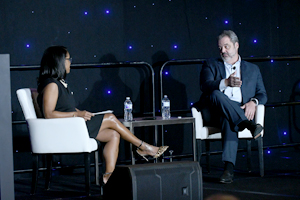
by Kimberly McNair, EdD, Director of College Access and Enrollment, Montgomery College
Higher education leaders must have a clear understanding of where we are now, what’s on the horizon, and where we can realistically move in the near future. According to D. Mark McCoy, president of DePauw University, one aspect of preparing for
the future meant restructuring faculty and staff to help ensure the fiscal health of the institution. Despite a healthy endowment, a billion dollar budget sheet and other resources, DePauw experienced decades-long structural deficits that needed to
be addressed. President McCoy outlined strategies employed at DePauw that helped them restructure the organization from a position of strength based on a set of core beliefs, clear goals, and objective data.
To begin, DePauw conducted a financial benchmarking study to identify peer institutions that are consistently achieving a balanced budget. Results of the study indicated that as compared to aspirational institutions, DePauw students had more financial
need, but graduated with less debt. The study also showed DePauw employed not only more faculty and staff than aspirational institutions, but their expenses were also significantly higher. The results of the study were clear – restructuring,
a euphemism for letting people go, is the best and only way to prepare the institution for the future. Below are the lessons Dr. McCoy learned while overseeing the harsh reality of downsizing positions.
Lesson 1: Before you begin restructuring, start from a shared space. Explain the goals of the change, and share your beliefs about how to achieve the goal.
Lesson 2: Use your data to help set the context for the change.
Lesson 3: Focus on caring for employees as much as you can. Treat employees with as much respect and consideration as you can - how you inform them, and the supports you provide during and after they exit the institution matter.
Lesson 4: What looks like resistance is often a lack of clarity. Make sure your vision is descriptive and perfectly clear.
Lesson 6: There is no such thing as over-communication.
Lesson 7: Build safety and share vulnerability. Vulnerability doesn’t come after trust; it comes before it.
Lesson 9: The process employed at DePauw is not THE way, it is A way.
Lesson 10: Build your core – be determined, know your why, and know what you are willing to die for